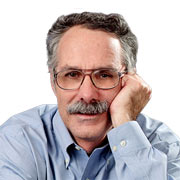The great wage mystery deepens. In economic recoveries, there usually comes a time when strong job gains lead to strong wage gains. Businesses must pay more to recruit and retain the workers they need. Not this time - or at least not yet. The unemployment rate has dropped from a peak of 10 percent in October 2009 to 5.6?percent at the end of 2014. But hourly wage gains haven't accelerated. They've plodded along at about a 2 percent annual rate, roughly matching inflation.
Economists are baffled. "This labor market recovery looks different from anything since World War II," says University of Chicago economist Steven Davis. Depending on the indicator, the job market appears either tight or loose. Low unemployment rates suggest tight, Davis says. So does the average time it takes firms to fill a vacancy; at nearly 25?days, it is just above levels before the Great Recession. But weak wage growth and the high share of jobless out of work for more than six months - a third of all unemployment - indicate a loose market.
The answer matters. The Federal Reserve is considering whether to begin raising interest rates to preempt higher inflation. By the unemployment figure alone, that would seem justified. It's near levels that, in the past, risked a wage-price spiral. But the evidence of a loose job market argues against raising interest rates, which (in this view) would needlessly condemn countless Americans to unemployment or short hours.
The debate concerns the so-called "natural rate of unemployment," also known as the NAIRU. This is the unemployment rate at which increasing wage pressures spill over into higher price inflation. (NAIRU stands for the "non-accelerating inflation rate of unemployment" - the term attests to economists' capacity to confuse the public.) The Congressional Budget Office puts the NAIRU at 5.7 percent; that's a mainstream estimate.
But many economists, on both left and right, think the NAIRU may have shifted down. "We're nowhere near the NAIRU," says Josh Bivens of the left-of-center Economic Policy Institute. Economist Michael Strain of the conservative American Enterprise Institute agrees. By itself, the unemployment rate no longer accurately reflects the state of the job market, he says.
"We can add over 200,000 jobs a month and have the unemployment rate drop without being terribly concerned about inflation," he argues.
Despite its title, the "natural" rate of unemployment isn't natural. It can shift to reflect different laws, economic conditions or working populations. If present estimates are outdated, it's unclear what new estimates should be. As Bivens notes, predictions of the NAIRU have been notoriously unreliable. Economists can best identify it with hindsight, when the data show how the unemployment rate and inflation interact.
Still, wages are the crux of the matter. Why are they lagging? Theories abound. Here are four.
• Shadow unemployment: The recession and weak recovery caused millions of unemployed and discouraged workers to stop looking for jobs. This meant they weren't counted by the government as unemployed. But many would like a job, expanding the pool of available workers and reducing wage pressures. A study by Jared Bernstein - formerly Vice President Biden's chief economist - supports this theory.
• Job insecurity: Workers tend to stick with their present jobs because they fear they won't find new ones. Therefore, employers don't have to raise wages as much to keep good workers or recruit new workers. Research by economists Davis and John Haltiwanger of the University of Maryland confirms that the job market has grown "less fluid." Workers change firms less often.
• Delayed pay cuts: Companies have skimped on annual pay increases because they didn't sharply reduce pay in the Great Recession, as they might have. Their reluctance reflected popular hostility to outright wage cuts and fears that, if imposed, deep cuts would harm morale and performance. (Economists' obscure term for this phenomenon is "downward wage rigidity.") Instead, employers have trimmed annual wage increases, argue studies by the Federal Reserve Bank of San Francisco.
• More competition and less protection: For years, liberal commentators have contended that intensified global competition, inadequate minimum wages and shrinking union jobs have undermined workers' bargaining power. Wages for many workers are weak, by this theory, because market forces are too strong.
No one knows whether all - or none - of these theories are correct. What seems true is that, one way or another, the mechanism connecting low unemployment to rising wages and higher inflation has weakened. We don't know by how much or for how long. The NAIRU has probably dropped, but (again) we don't know by how much or for how long.
Given this vast ignorance, the Federal Reserve is proceeding cautiously. It seems uneager to raise interest rates absent stronger evidence of inflationary pressures. Uncertainty about the global economy similarly counsels caution. This is sensible.
Comment by clicking here.
Previously:
• 01/14/15: 'Dynamic' deceptions: Washington's enlightened budgeting vs. cooking the books
• 01/12/15: Who stopped inflation? Volcker, Reagan and history
• 01/08/15: Europe's other unending crisis
• 01/05/15: Is the economic slog really over?
• 01/02/15: Five economic stories to watch in 2015
• 12/29/14: 'Helping' the middle class won't fix its psychological problems



 Contact The Editor
Contact The Editor
 Articles By This Author
Articles By This Author